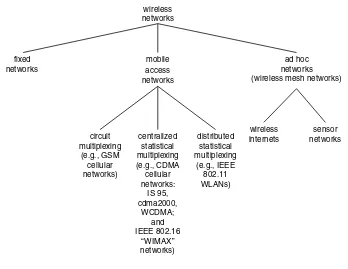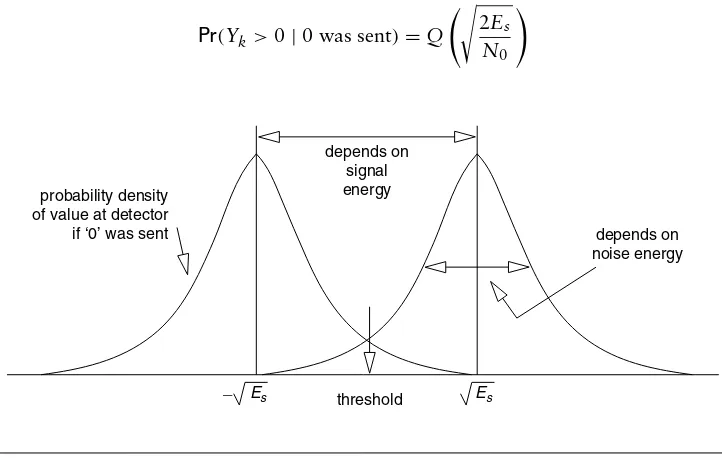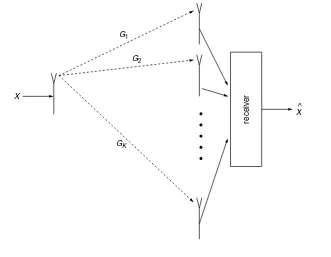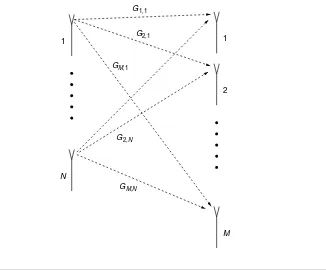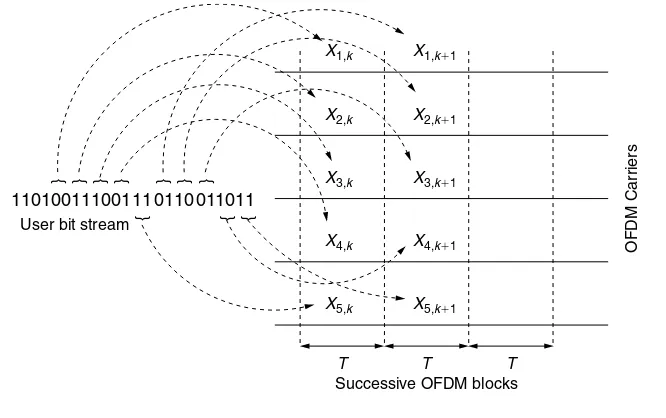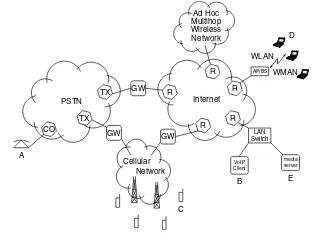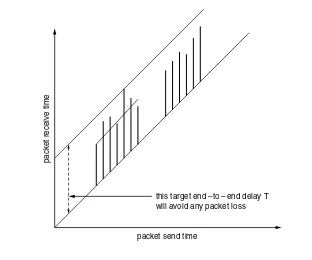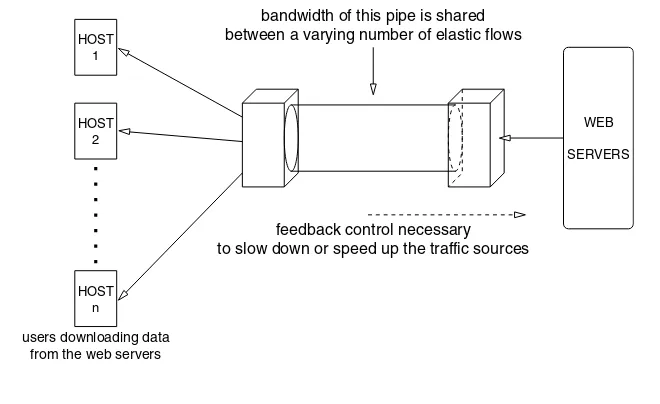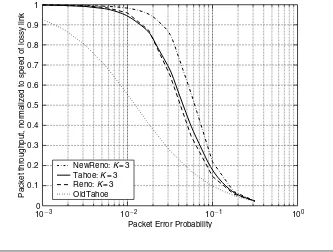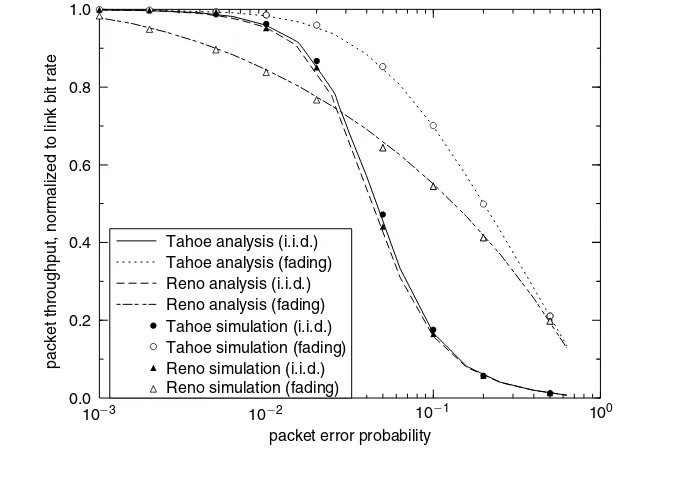Series Editor, David Clark, M.I.T.
Wireless Networking
Anurag Kumar, D. Manjunath, and Joy Kuri Bluetooth Application Programming with the Java APIs, Essentials Edition
Timothy J. Thompson, Paul J. Kline, and C. Bala Kumar
Internet Multimedia Communications Using SIP Rogelio Martinez Perea
Information Assurance: Dependability and Security in Networked Systems
Yi Qian, James Joshi, David Tipper, and Prashant Krishnamurthy
Network Simulation Experiments Manual, 2e Emad Aboelela
Network Analysis, Architecture, and Design, 3e James D. McCabe
Wireless Communications & Networking: An Introduction
Vijay K. Garg
Ethernet Networking for the Small Office and Professional Home Office
Jan L. Harrington
IPv6 Advanced Protocols Implementation Qing Li, Tatuya Jinmei, and Keiichi Shima Computer Networks: A Systems Approach, 4e Larry L. Peterson and Bruce S. Davie Network Routing: Algorithms, Protocols, and Architectures
Deepankar Medhi and Karthikeyan Ramaswami Deploying IP and MPLS QoS for Multiservice Networks: Theory and Practice
John Evans and Clarence Filsfils
Traffic Engineering and QoS Optimization of Integrated Voice & Data Networks Gerald R. Ash
IPv6 Core Protocols Implementation Qing Li, Tatuya Jinmei, and Keiichi Shima Smart Phone and Next-Generation Mobile Computing
Pei Zheng and Lionel Ni
GMPLS: Architecture and Applications Adrian Farrel and Igor Bryskin Network Security: A Practical Approach Jan L. Harrington
Content Networking: Architecture, Protocols, and Practice
Markus Hofmann and Leland R. Beaumont Network Algorithmics: An Interdisciplinary Approach to Designing Fast Networked Devices George Varghese
Network Recovery: Protection and Restoration of Optical, SONET-SDH, IP, and MPLS Jean Philippe Vasseur, Mario Pickavet, and Piet Demeester
Routing, Flow, and Capacity Design in Communication and Computer Networks Michal Pióro and Deepankar Medhi Wireless Sensor Networks: An Information Processing Approach
Feng Zhao and Leonidas Guibas
Communication Networking: An Analytical Approach
Anurag Kumar, D. Manjunath, and Joy Kuri The Internet and Its Protocols: A Comparative Approach
Adrian Farrel
Modern Cable Television Technology: Video, Voice, and Data Communications, 2e Walter Ciciora, James Farmer, David Large, and Michael Adams
Bluetooth Application Programming with the Java APIs
C. Bala Kumar, Paul J. Kline, and Timothy J. Thompson
Policy-Based Network Management: Solutions for the Next Generation
John Strassner
MPLS Network Management: MIBs, Tools, and Techniques
Monique Morrow and Kateel Vijayananda Telecommunications Law in the Internet Age Sharon K. Black
Optical Networks: A Practical Perspective, 2e Rajiv Ramaswami and Kumar N. Sivarajan Internet QoS: Architectures and Mechanisms Zheng Wang
TCP/IP Sockets in Java: Practical Guide for Programmers
Michael J. Donahoo and Kenneth L. Calvert TCP/IP Sockets in C: Practical Guide for Programmers
Kenneth L. Calvert and Michael J. Donahoo Multicast Communication: Protocols, Programming, and Applications Ralph Wittmann and Martina Zitterbart MPLS: Technology and Applications Bruce Davie and Yakov Rekhter
High-Performance Communication Networks, 2e Jean Walrand and Pravin Varaiya
Understanding Networked Applications: A First Course
David G. Messerschmitt
Integrated Management of Networked Systems: Concepts, Architectures, and Their Operational Application
Heinz-Gerd Hegering, Sebastian Abeck, and Bernhard Neumair
Virtual Private Networks: Making the Right Connection
Dennis Fowler
Networked Applications: A Guide to the New Computing Infrastructure
David G. Messerschmitt
Wide Area Network Design: Concepts and Tools for Optimization
Robert S. Cahn
WIRELESS
NETWORKING
Anurag Kumar
D. Manjunath
Joy Kuri
AMSTERDAM•BOSTON•HEIDELBERG•LONDON NEW YORK•OXFORD•PARIS•SAN DIEGO SAN FRANCISCO•SINGAPORE•SYDNEY•TOKYO
Project Manager Karthikeyan Murthy Assistant Editor Gregory Chalson Design Direction Alisa Andreola Cover Designer Dick Hannus
Cover Images gettyimages.com / John Foxx istock.com / Jan Rysavy Interior Printer Sheridan Books Cover Printer Phoenix
Morgan Kaufmann Publishers is an imprint of Elsevier. 30 Corporate Drive, Suite 400, Burlington, MA 01803, USA This book is printed on acid-free paper. ∞
Copyright © 2008, Anurag Kumar, D. Manjunath and Joy Kuri. Published by Elsevier Inc. All rights reserved. The right of author names to be identified as the authors of this work have been asserted in accordance with the copyright, Designs and Patents Act 1988.
Designations used by companies to distinguish their products are often claimed as trademarks or registered trademarks. In all instances in which Morgan Kaufmann Publishers is aware of a claim, the product names appear in initial capital or all capital letters. Readers, however, should contact the appropriate companies for more complete information regarding trademarks and registration.
No part of this publication may be reproduced, stored in a retrieval system, or transmitted in any form or by any means—electronic, mechanical, photocopying, scanning, or otherwise—without prior written permission of the publisher.
Permissions may be sought directly from Elsevier’s Science & Technology Rights Department in Oxford, UK: phone: (+44) 1865 843830, fax: (+44) 1865 853333, E-mail: [email protected]. You may also complete your request online via the Elsevier homepage (http://elsevier.com), by selecting “Support & Contact” then “Copyright and Permission” and then “Obtaining Permissions.”
Library of Congress Cataloging-in-Publication Data
Kumar, Anurag.
Wireless networking / Anurag Kumar, D. Manjunath, Joy Kuri. p. cm. – (The Morgan Kaufmann series in networking) Includes bibliographical references.
ISBN 0-12-374254-4
1. Wireless LANs. 2. Wireless communication systems. 3. Sensor networks. I. Manjunath, D. II. Kuri, Joy. III. Title.
TK5105.78.K86 2008 621.384–dc22
2007053011
British Library Cataloguing in Publication Data
A catalogue record for this book is available from the British Library ISBN: 978-0-12-374254-4
For information on all Morgan Kaufmann publications, visit our website atwww.mkp.comorwww.books.elsevier.com Printed and bound in the United States of America
Preface xiii
1 Introduction 1
1.1 Networking as Resource Allocation 1
1.2 A Taxonomy of Current Practice 3
1.3 Technical Elements 9
1.4 Summary and Our Way Forward 12
2 Wireless Communication: Concepts, Techniques, Models 15
2.1 Digital Communication over Radio Channels 16
2.1.1 Simple Binary Modulation and Detection 17
2.1.2 Getting Higher Bit Rates 20
2.1.3 Channel Coding 23
2.1.4 Delay, Path Loss, Shadowing, and Fading 25
2.2 Channel Capacity 32
2.2.1 Channel Capacity without Fading 32
2.2.2 Channel Capacity with Fading 35
2.3 Diversity and Parallel Channels: MIMO 36
2.4 Wideband Systems 42
2.4.1 CDMA 42
2.4.2 OFDMA 45
2.5 Additional Reading 48
3 Application Models and Performance Issues 53
3.1 Network Architectures and Application Scenarios 54
3.2 Types of Traffic and QoS Requirements 56
3.3 Real-Time Stream Sessions: Delay Guarantees 60
3.3.1 CBR Speech 60
3.3.2 VBR Speech 61
3.3.4 QoS Objectives 65
3.3.5 Network Service Models 67
3.4 Elastic Transfers: Feedback Control 67
3.4.1 Dynamic Control of Bandwidth Sharing 69
3.4.2 Control Mechanisms: MAC and TCP 70
3.4.3 TCP Performance over Wireless Links 72
3.5 Notes on the Literature 78
4 Cellular FDM-TDMA 81
4.1 Principles of FDM-TDMA Cellular Systems 81
4.2 SIR Analysis: Keeping Cochannel Cells Apart 86
4.3 Channel Reuse Analysis: Hexagonal Cell Layout 92
4.3.1 Cochannel Cell Groups 93
4.3.2 CalculatingNreuse 94
4.3.3 DR Ratio: Simple Analysis, Cell Sectorization 96
4.4 Spectrum Efficiency 99
4.5 Channel Allocation and Multicell Erlang Models 101
4.5.1 Reuse Constraint Graph 101
4.5.2 Feasible Carrier Requirements 103
4.5.3 Carrier Allocation Strategies 103
4.5.4 Call Blocking Analysis 104
4.5.5 Comparison of FCA and MPA 106
4.6 Handovers: Techniques, Models, Analysis 112
4.6.1 Analysis of Signal Strength Based Handovers 112
4.6.2 Handover Blocking, Call Dropping: Channel Reservation 115
4.7 The GSM System for Mobile Telephony 117
4.8 Notes on the Literature 119
5 Cellular CDMA 125
5.1 The Uplink SINR Inequalities 126
5.2 A Simple Case: One Call Class 130
5.2.1 Example: Two BSs and Collocated MSs 130
5.2.2 Multiple BSs and Uniformly Distributed MSs 131
5.2.3 Other Cell Interference: Hard and Soft Handover 134
5.2.4 System Capacity for Voice Calls 139
5.3 Admission Control of Multiclass Calls 140
5.3.1 Hard and Soft Admission Control 141
5.3.2 Soft Admission Control Using Chernoff’s Bound 141
5.5 Scheduling Elastic Transfers 149
5.6 CDMA-Based 2G and 3G Cellular Systems 154
5.7 Notes on the Literature 155
5.8 Appendix: Perron-Frobenius Theory 156
6 Cellular OFDMA-TDMA 161
6.1 The General Model 162
6.2 Resource Allocation over a Single Carrier 163
6.2.1 Power Control for Optimal Service Rate 165
6.2.2 Power Control for Optimal Power Constrained Delay 171
6.3 Multicarrier Resource Allocation: Downlink 178
6.3.1 Single MS Case 178
6.3.2 Multiple MSs 181
6.4 WiMAX: The IEEE 802.16 Broadband Wireless Access Standard 183
6.5 Notes on the Literature 183
7 Random Access and Wireless LANs 187
7.1 Preliminaries 188
7.2 Random Access: From Aloha to CSMA 189
7.2.1 Protocols without Carrier Sensing: Aloha and Slotted
Aloha 190
7.2.2 Carrier Sensing Protocols 199
7.3 CSMA/CA and WLAN Protocols 201
7.3.1 Principles of Collision Avoidance 201
7.3.2 The IEEE 802.11 WLAN Standards 204
7.3.3 HIPERLAN 211
7.4 Saturation Throughput of a Colocated IEEE 802.11-DCF Network 213
7.5 Service Differentiation and IEEE 802.11e WLANs 222
7.6 Data and Voice Sessions over 802.11 225
7.6.1 Data over WLAN 226
7.6.2 Voice over WLAN 230
7.7 Association in IEEE 802.11 WLANs 234
7.8 Notes on the Literature 235
8 Mesh Networks: Optimal Routing and Scheduling 243
8.1 Network Topology and Link Activation Constraints 244
8.1.1 Link Activation Constraints 244
8.2 Link Scheduling and Schedulable Region 247
8.2.1 Stability of Queues 250
8.3 Routing and Scheduling a Given Flow Vector 257
8.4 Maximum Weight Scheduling 264
8.5 Routing and Scheduling for Elastic Traffic 273
8.5.1 Fair Allocation for Single Hop Flows 277
8.5.2 Fair Allocation for Multihop Flows 280
8.6 Notes on the Literature 287
9 Mesh Networks: Fundamental Limits 291
9.1 Preliminaries 292
9.1.1 Random Graph Models for Wireless Networks 293
9.1.2 Spatial Reuse, Network Capacity, and Connectivity 296
9.2 Connectivity in the Random Geometric Graph Model 297
9.2.1 Finite Networks in One Dimension 298
9.2.2 Networks in Two Dimensions: Asymptotic Results 302
9.3 Connectivity in the Interference Model 309
9.4 Capacity and Spatial Reuse Models 315
9.5 Transport Capacity of Arbitrary Networks 318
9.6 Transport Capacity of Randomly Deployed Networks 322
9.6.1 Protocol Model 322
9.6.2 Discussion 331
9.7 Notes on the Literature 333
10 Ad Hoc Wireless Sensor Networks (WSNs) 337
10.1 Communication Coverage 339
10.2 Sensing Coverage 341
10.3 Localization 348
10.4 Routing 353
10.5 Function Computation 359
10.6 Scheduling 368
10.6.1 S-MAC 369
10.6.2 IEEE 802.15.4 (Zigbee) 370
10.7 Notes on the Literature 372
Appendices 375
A Notation and Terminology 377
A.1 Miscellaneous Operators and Mathematical Notation 377
A.2 Vectors and Matrices 377
A.3 Asymptotics: TheO,o, and∼Notation 377
B A Review of Some Mathematical Concepts 381
B.1 Limits of Real Number Sequences 381
B.2 A Fixed Point Theorem 382
B.3 Probability and Random Processes 382
B.3.1 Useful Inequalities and Bounds 382
B.3.2 Convergence Concepts 384
B.3.3 The Borel-Cantelli Lemma 385
B.3.4 Laws of Large Numbers and Central Limit Theorem 385
B.3.5 Stationarity and Ergodicity 386
B.4 Notes on the Literature 387
C Convex Optimization 389
C.1 Convexity 389
C.2 Local and Global Optima 389
C.3 The Karush-Kuhn-Tucker Conditions 390
C.4 Duality 391
D Discrete Event Random Processes 393
D.1 Stability Analysis of Discrete Time Markov Chains (DTMCs) 393
D.2 Continuous Time Markov Chains 394
D.3 Renewal Processes 398
D.3.1 Renewal Reward Processes 398
D.3.2 The Excess Distribution 399
D.3.3 Markov Renewal Processes 399
D.4 Some Topics in Queuing Theory 401
D.4.1 Little’s Theorem 401
D.4.2 Poisson Arrivals See Time Averages (PASTA) 402
D.5 Some Important Queuing Models 403
D.5.1 The M/G/c/c Queue 403
D.5.2 The Processor Sharing Queue 404
D.6 Notes on the Literature 405
Bibliography 407
Another Book on Wireless Networking?
The availability of high performance, low power, and low cost digital signal processors, and advances in digital communication techniques over the radio frequency spectrum have resulted in the widespread availability of wireless network technology for mass consumption. Several excellent books are now available that deal with the area of wireless communications, where topics of recent interest include multiple-input-multiple-output (MIMO) systems, space time coding, orthogonal frequency division multiplexing (OFDM), and multiuser detection. Wireless networks are best known in the context of first- and second-generation mobile telephony (AT&T’s analog AMPS system in the first second-generation, and the GSM and CDMA digital systems in the second generation). There are books that provide coverage of such wireless networks, and also those that combine a comprehensive treatment of physical layer wireless communication with that of cellular networks.
In the last decade, however, there has been an explosion in the development and deployment of new wireless network technologies, and in the conceptuali-zation of, and research in, a variety of newer ones. From the ubiquitous WiFi coffee shop and airport networks to the emerging WiMAX systems, which promise broadband wireless access to mobile users, the menu of wireless access networks promises to become so comprehensive that wired access from user devices may soon become a relic of the past. Research on wireless mesh networks (so-called ad hoc wireless networks), which started in the 1970s, is being pursued with renewed vigor due to the availability of inexpensive and interoperable mobile wireless devices. In addition, the widespread use of wireless sensor networks (in conjunction with emerging standards such as Zigbee and IEEE 802.15.4) is a clear and present possibility. Thus the variety and scale of wireless networks is unprecedented, and, in teaching courses in our institutions, we have felt the need for a comprehensive analytical treatment of wireless networking, keeping in mind the technical developments in the past, the present, and the future. This book is the outcome of our efforts to address this need.
simulation is a useful vehicle for understanding the performance of protocols, it is not always sufficient, because, once again, the devil is in the detail. The assumptions made in deriving simulation models play an important role in the results that are obtained. If a simulation program simply encodes the standard, then running the simulation only provides a plethora of numbers, with no new insights being gained. Further, large simulation models, although possibly closer to reality, take a lot of effort to develop and debug, and are slow to execute, thus rendering them not very useful in the early stages of experimentation with algorithms. This is where analytical models become very important. First, the process of deriving such models from the standards, or from system descriptions, provides very useful insights. Second, the analytical models can be used to help verify large simulation programs, by providing exact results for subcases of the model being simulated. Third, research in analytical modeling is necessary to develop models that can be programmed into simulators, so as to increase simulation speed. Finally, the analytical approach is very important for the development of new and efficient protocols, and there is a trend toward optimization via reverse engineering of well-accepted protocols.
In addition to the variety of networks and protocols that need to be understood, there is a large body of fundamental results on wireless networks that have been developed over the last fifteen years that give important insights into optimal design and the limits of performance. Examples of such results include distributed power control in CDMA networks, optimal scheduling in wireless networks (with a variety of optimization objectives involving issues such as network stability, performance, revenue, and fairness), transmission range thresholds for connectivity in a wireless mesh network, and the transport capacity of these networks. Further, the imminence of sensor networks has generated a large class of fundamental problems in the areas of stochastic networks and distributed algorithms that are intrinsically important and interesting.
This book aims (1) to provide an analytical perspective on the design and analysis of the traditional and emerging wireless networks, and (2) to discuss the nature of, and solution methods to, the fundamental problems in wireless networking. For the sake of completeness, traditional voice telephony over GSM and CDMA wireless access networks also is covered. The approach is via various resource allocation models that are based on simple models of the underlying physical wireless communication.
About the Book and the Viewpoint
to analyze it. In this process we will use techniques drawn from, among others, probability theory, stochastic processes, constrained optimization and duality, and graph theory. We believe it is necessary to make forays into these areas in order to bring their power to bear on the problem at hand. However, we have attempted to make the book as self-contained as possible. Wherever possible, we have used only elementary concepts taught in basic courses in engineering mathematics. A brief overview of most of the advanced mathematical material that we use is provided in the appendix. Also, wherever possible we have avoided the theorem–proof approach. Instead, we have developed the theorems or results and then formally stated them.
After the introductory chapter, we begin the presentation of the main material of the book in Chapter 2 by giving an overview of the physical layer issues that are so much more important to understand wireless networks than they are for wireline networks. Wireless networks are viewed as being either access networksormesh networks.In access networks mobile wireless nodes connect to an infrastructure node, and in mesh networks they form an independent internet and may or may not connect to an infrastructure network. Access networks are covered in Chapters 4 through 7 and mesh networks are covered in Chapters 8 through 10.
The wireless networking aspect of the book begins in Chapter 3. Like in our earlier book,Communication Networking: An Analytical Approach,we precede the discussion on access networks by listing the issues and setting the performance objectives of a wireless network in Chapter 3. FDM-TDMA cellular networks (of which GSM networks are a major example) are discussed in Chapter 4, with the focus on signal-to-interference ratio analysis, on channel allocation, and on the call blocking and call dropping performance. Chapter 5 is on CDMA networks where the main emphasis is on interference management via power allocation. Whereas the traffic model in Chapter 4 and in much of Chapter 5 is an arrival process of calls, each with a rate requirement, in Chapter 6, on OFDMA access networks, we consider buffered models, and discuss power allocation over time and over carriers with the objectives of stability and mean delay. In Chapter 7, we discuss the performance of distributed allocation of channel time in wire-less LANs.
We begin our discussion of mesh networks in Chapter 8 by considering optimal routing and scheduling in a given mesh network. One can view this class of problems as the optimal allocation of time and space in a network. In Chapter 9 we explore fundamental limits of this time and space allocation to the flows. Chapter 10 is on the emerging area of sensor networks, a rich field of research issues including connectivity and coverage properties of stochastic networks, and distributed computation.
and complexities. Wherever possible, we have simplified the models for pedagogic convenience.
Using the Book
This is a graduate text, though a final year undergraduate course could be supplemented with material from this text. Some understanding of networking concepts is assumed. A quick introduction may also be obtained from Chapter 2 of our earlier book,Communication Networking: An Analytical Approach. Most of the chapters are self-contained and we believe that an instructor can pick and choose the chapters. A course that needs to cover voice and data access networks (including cellular networks and wireless LANs) could be based on Chapters 4 through 7. One can say that these chapters are tied closely to real networks. Chapters 8 through 10 are of a more fundamental and abstract nature. A course with a more current research emphasis could be built around Chapters 6 through 10.
The publisher maintains a website for this book at www.mkp.com. We maintain a website for the book at ece.iisc.ernet.in/∼anurag/books. These websites contain errata, additional problems, PostScript files of the figures used in the book, and other instructional material. An instructor’s manual containing solutions to all the exercises and problems and some supplementary problems is also available from the authors.
Arthur Clarke had said that the communications satellite will make inevitable the United Nations of the Earth. Wireless communication and networking are making these United Nations flatter, and possibly more democratic with unbridled opportunities for all. So let’s “unwire, cut the cord, and go wireless.” And, while we do it, let us step back a bit and understand them from the ground up!
Acknowledgments
This book has been developed out of the two-part survey article “A Tutorial Survey of Topics in Wireless Networking,” by Anurag Kumar and D. Manjunath, published in Sa¯dhana, Indian Academy of Sciences Proceedings in Engineering¯ Sciences, Vol. 32, No. 6, December 2007. We are grateful to the publishers of
Sa¯dhana¯ for permitting us to use several extracts and figures from our survey article.
Parts of an early draft of this book have been used by Ed Knightly (Rice University), and Utpal Mukherji (Indian Institute of Science). We hope that the finished version will meet their expectations for the courses they teach.
Book writing grants have been provided by the Centre for Continuing Education of the Indian Institute of Science to the first author and by the Curriculum Development Program of the Indian Institute of Technology, Bombay, to the second author.
Finally, we are grateful to our families for bearing patiently our absence from the regular call of duty at home, in the evenings, holidays, and weekends during the several months over which this book was developed.
Anurag Kumar D. Manjunath Joy Kuri
Introduction
T
he idea of sending information over radio waves (i.e., wireless commu-nication) is over a hundred years old. When several devices with radio transceivers share a portion of the radio spectrum to send information to each other, we say that we have awireless communication network, or simply a wireless network.In this chapter we begin by developing a three-layered view of wireless networks. We delineate the subject matter of this book—that is, wireless networking—as dealing with the problem of resource allocation when several devices share a portion of the RF spectrum allocated to them. Next, we provide a taxonomy of current wireless networks. The material in the book is organized along this taxonomy. Then, in this chapter, we identify the common basic technical elements that underlie any wireless network as being (1) physical wireless communication; (2) neighbor discovery, association, and topology formation; and (3) transmission scheduling.
Finally, we provide an overview of the contents of the remaining nine chapters of the book.
1.1 Networking as Resource Allocation
Following our viewpoint in [89] we view wireline and wireless communication networks in terms of the three-layered model shown in Figure 1.1. Networks carry the flows of information between distributed applications such as telephony, teleconferencing, media-sharing, World Wide Web access, e-commerce, and so on. The points at which distributed information applications connect to the generators and absorbers of information flows can be viewed as sources and sinks of traffic (see Figure 1.1). Examples of traffic sources are microphones in telephony devices, video cameras, and data, voice, or video files (stored on a computer disk) that are being transmitted to another location. Examples of traffic sinks are telephony loudspeakers, television monitors, or computer storage devices.
As shown in Figure 1.1, the sources and sinks of information and the distributed applications connect to the communication network via common
Wireline Bit Carrier Infrastructure Resource Allocation
Algorithms
Resource Allocation
Algorithms sources and/or sinks
distributed applications
Shared Radio Spectrum (a portion of the RF spectrum)
Information Services
Figure 1.1 A conceptual view of distributed applications utilizing wireline and wireless networks. Wireless networking is concerned with algorithms for resource allocation between devices sharing a portion of the radio spectrum. On the other hand, in wireline networks the resource allocation algorithms are concerned with sharing the fixed resources of a bit transport infrastructure.
facilities for video telephony or for streaming video playout; or mail preparation and forwarding software for electronic mail; or a browser for the World Wide Web.
We turn now to the bottom layer in Figure 1.1. In wireline networks the information to be transported between the endpoints of applications is carried over a static bit-carrier infrastructure. These networks typically comprise high-quality digital transmission systems over copper or optical media. Once such links are properly designed and configured, they can be viewed as “bit pipes,” each with a certain bit rate, and usually a very small bit error rate. The bit carrier infrastructure can be dynamically reconfigured on the basis of traffic demands, and such actions are a part of the cloud labeled “resource allocation algorithms” in the figure.
such as obstructions by steel and concrete buildings, absorption in partition walls or in foliage, and interference between copies of a signal that traverse multiple paths. In order to combat these problems, it is imperative that in a mobile or ad hoc wireless network the PHY layer should be adaptable. In fact, in some systems multiple modulation schemes are available, and each of these may have variable parameters such as the error control codes, and the transmitter powers. Hence, unlike a wired communication network, where we can view networking as being concerned with the problems of resource sharing over a static bit carrier infrastructure, in wireless networking, the resource allocation mechanisms would include these adaptations of the PHY layer. Thus, in Figure 1.1 we have actually “absorbed” the physical wireless communication mechanisms into the resource allocation layer. Hence, we can define our view ofwireless networking as being concerned with all the mechanisms, procedures, or algorithms for efficient sharing of a portion of the radio spectrum so that all the instances of communication between the various devices obtain their desiredquality of service (QoS).
1.2 A Taxonomy of Current Practice
In this book, instead of pursuing an abstract, technology agnostic approach, we will develop an understanding of the various wireless networking techniques in the context of certain classes of wireless networks as they exist today. Thus we begin our treatment by taking a look at a taxonomy of the current practice of wireless networks. Figure 1.2 provides such a taxonomy. Several commonly used terms of the technology will arise as we discuss this taxonomy. These will be highlighted by theitalic font, and their meanings will be clear from the context. Of course, the attendant engineering issues will be dealt with at length in the remainder of the book.
Fixed wireless networks include line-of-sight microwave links, which until recently were very popular for long distance transmission. Such networks basically comprise point-to-point line-of-sight digital radio links. When such links are set up, with properly aligned high gain antennas on tall masts, the links can be viewed as point-to-point bit pipes, albeit with a higher bit error rate than wired links. Thus in such fixed wireless networks no essentially new issues arise than in a network of wired links.
On the other hand the second and third categories shown in the first level of the taxonomy (i.e., access networks and ad hoc networks) involvemultiple access
wireless internets
sensor networks ad hoc networks (wireless mesh networks) wireless
networks
mobile access networks fixed
networks
distributed statistical multiplexing
(e.g., IEEE 802.11 WLANs) centralized
statistical multiplexing (e.g., CDMA cellular networks:
IS 95, cdma2000,
WCDMA; and IEEE 802.16
“WIMAX” networks) circuit
multiplexing (e.g., GSM cellular networks)
Figure 1.2 A taxonomy of wireless networks.
base stations
Cellular Network Wireline Network
WLAN
AP
Cellular wireless networks were introduced in the early 1980s as a technology for providing access to the wired phone network to mobile users. The network coverage area is partitioned into regions (with diameters ranging from hundreds of meters to a few kilometers) calledcells, hence the term “cellular.” In each cell there is abase station(BS), which is connected to the wired network, and through which the mobile devices in the cell communicate over a one hop wireless link. The cellular systems that have the most widespread deployment are the ones that share the available spectrum using frequency division multiplexed time division multiple access(FDM-TDMA) technology. Among such systems by far the most commercially successful has been the GSM system, developed by a European consortium. The available spectrum is first partitioned into a contiguousup-link
band and another contiguous down-link band. Each of these bands is statically or dynamically partitioned into reuse subbands, with each cell being allocated such a subband (this is the FDM aspect). The partitioning of the up-link and down-link bands is done in a paired manner so that each cell is actually assigned a pair of subbands. Each subband is further partitioned into channels or carriers (also an FDM aspect), each of which is digitally modulated and then slotted in such a way that a channel can carry up to a fixed number of calls (e.g., 8 calls) in a TDM fashion. Each arriving call request in a cell is then assigned a slot in one of the carriers in that cell; of course, a pair of slots is assigned in paired up-link and down-link channels in that cell. Thus, since each call is assigned dedicated resources, the system is said to be circuit multiplexed, just like the wireline phone network. These are narrowband systems(i.e., users’ bit streams occupy frequency bands just sufficient to carry them), and the radio links operate at a high signal-to-interference-plus-noise-ratio (SINR), and hence carefulfrequency planning (i.e., partitioning of the spectrum into reuse subbands, and allocation of the subbands to the cells) is needed to avoidcochannel interference. The need for allocation of frequency bands over the network coverage area (perhaps even dynamic allocation over a slow timescale), and the grant and release of individual channels as individual calls arrive and complete, requires the control of such systems to be highly centralized. Note that call admission control, that is, call blocking, is a natural requirement in an FDM-TDMA system, since the resources are partitioned and each connection is assigned one resource unit.
Another cellular technology that has developed over the past 10 to 15 years is the one based oncode division multiple access(CDMA). In these networks, the entire available spectrum is reused in every cell. These are broadband systems, which means that each user’s bit stream (a few kilobits per second) occupies the entire available radio spectrum (a few megahertz). This is done byspreading
every other signal. Thus at any point of time there is an allocation of powers to all the transmitters sharing the spectrum, such that their desired receivers can decode their transmissions, in the presence of all the cross interferences. These desired power levels need to be set depending on the locations of the users, and the consequent channel conditions between the users and the base stations, and need to be dynamically controlled as users move about and channel conditions change. Hence tight control of transmitter power levels is necessary. Further, of course, the allocation of spreading codes, and management of movement between cells needs to done. We note that, unlike the FDM-TDMA system described earlier, there is no dedicated allocation of resources (frequency and time-slot) to each call. Indeed, during periods when a call is inactive no radio resources are utilized, and the interference to other calls is reduced. Thus, we can say that the traffic isstatistically multiplexed. If there are several calls in the system, each needing certainquality of service (QoS)(bit rate, maximum bit error rate), then the number of calls in the system needs to be controlled so that the probability of QoS violation of the calls is kept small. This requires call admission control, which is an essential mechanism in CDMA systems, in order that QoS objectives can be achieved. Evidently, these are all centrally coordinated activities, and hence even CDMA cellular systems depend on central intelligence that resides in thebase station controllers(BSCs).
Until recently, cellular networks were driven primarily by the needs of circuit multiplexed voice telephony; on demand, a mobile phone user is provided a wireless digital communication channel on which is carried compressed telephone quality (though not “toll” quality) speech. Earlier, we have described two technologies forsecond generation (2G)cellular wireless telephony. Recently, with the growing need for mobile Internet access, there have been efforts to provide packetized data access on these networks as well. In the FDM-TDMA systems, low bit rate data can be carried on the digital channel assigned to a user. As is always the case in circuit multiplexed networks, flexibility in the allocation of bandwidth is limited to assigning multiple channels to each user. Such an approach is followed in the GSM-GPRS (General Packet Radio Service) system, where, by combining multiple TDM slots on an FDM carrier, shared packet switched access is provided to mobile users. A further evolution is the EDGE (Enhanced Data rates for GSM Evolution) system, where, in addition to combining TDM slots, higher order modulation schemes, with adaptive modulation, are utilized to obtain shared packet switched links with speeds up to 474 Kbps. These two systems often are viewed, respectively, as 2.5G and 2.75G evolutions of the GSM system. These are data evolutions of an intrinsically circuit switched system that was developed for mobile telephony. On the other hand there is considerable flexibility in CDMA systems where there is no dedicated allocation of resources (spectrum or power). In fact, both voice and data can be carried in the packet mode, with the user bit rate, the amount of spreading, and the allocated power changing on a packet-by-packet basis. This is the approach taken for thethird generation (3G)cellular systems, which are based entirely on CDMA technology, and are meant to carry
video, and streaming video). The most widely adopted standard for 3G systems is WCDMA (wideband CDMA), which was created by the 3G Partnership Project (3GPP), a consortium of standardization organizations from the United States, Europe, China, Japan, and Korea.
Cellular networks were developed with the primary objective of providing wireless access for mobile users. With the growth of the Internet as the de facto network for information dissemination, access to the Internet has become an increasingly important requirement in most countries. In large congested cities, and in developing countries without a good wireline infrastructure,fixed wireless accessto the Internet is seen as a significant market. It is with such an application in mind that the IEEE 802.16 standards were developed, and are known in the industry as WiMAX. The major technical advance in WiMAX is in the adoption of several high performance physical layer (PHY) technologies to provide several tens of Mbps between a base station (BS) and fixed subscriber stations (SS) over distances of several kilometers. The PHY technologies that have been utilized are
orthogonal frequency division multiple access (OFDMA) and multiple antennas at the transmitters and the receivers. The latter are commonly referred to as
MIMO (multiple-input-multiple-output) systems. In an OFDMA system, several subchannels are statically defined in the system bandwidth, and these subchannels are digitally modulated. In order to permit up-link and down-link transmissions, time is divided into frames and each frame is further partitioned into an up-link and a down-link part (this is calledtime division duplexing (TDD)). The BS allocates time on the various subchannels to various down-link flows in the down-link part of the frame and, based on SS requests, in the up-link part of the frame. This kind of TDD MAC structure has been used in several earlier systems; for example, satellite networks involving very small aperture satellite terminals (VSATs), and even in wireline systems such as those used for the transmission of digital data over cable television networks. WiMAX specifications now have been extended to include broadband access to mobile users.
off for independently sampled random time durations, and then reattempt. When a node is able to acquire the channel, it can send at the highest of the standard bit rates that can be decoded, given the channel condition between it and its receiver. This technology is predominantly deployed for creating wireless local area networks (WLANs) in campuses and enterprise buildings, thus basically providing a one hop untethered access to a building’s Ethernet network. In the latest enhancements to the IEEE 802.11 standards, MIMO-OFDM physical layer technologies are being employed in order to obtain up to 100 Mbps transmission speeds in indoor environments.
With the widespread deployment of IEEE 802.11 WLANs in buildings, and even public spaces (such as shopping malls and airports), an emerging possibility is that of carrying interactive voice and streaming video traffic over these networks. The emerging concept of fourth-generation wireless access networks envisions mobile devices that can support multiple technologies for physical digital radio communication, along with the resource management algorithms that would permit a device to seamlessly move between 3G cellular networks, IEEE 802.16 access networks and IEEE 802.11 WLANs, while supporting a variety of packet mode services, each with its own QoS requirements.
With reference to the taxonomy in Figure 1.2, we now turn to the category labeled “ad hoc networks” or “wireless mesh networks.” Wireless access networks provide mobile devices with one-hop wireless access to a wired network. Thus, in such networks, in the path between two user devices there is only one or at most two wireless links. On the other hand a wireless ad hoc network comprises several devices arbitrarily located in a space (e.g., a line segment, or a two-dimensional field). Each device is equipped with a radio transceiver, all of which typically share the same radio frequency band. In this situation, the problem is to communicate between the various devices. Nodes need to discover neighbors in order to form a topology, good paths need to be found, and then some form of time scheduling of transmissions needs to be employed in order to send packets between the devices. Packets going from one node to another may need to be forwarded by other nodes. Thus, these aremultihopwireless packet radio networks, and they have been studied as such over several years. Interest in such networks has again been revived in the context ofmultihop wireless internetsandwireless sensor networks. We discuss these briefly in the following two paragraphs.
multihop wireless internet. In general, such a network could attach at some point to the wired Internet.
Whereas multihop wireless internets have the service objective of supporting instances of point-to-point communication, an ad hoc wireless sensor network has a global objective. The nodes in such a network are miniature devices, each of which carries a microprocessor (with an energy efficient operating system); one or more sensors (e.g., light, acoustic, or chemical sensors); a low power, low bit rate digital radio transceiver; and a small battery. Each sensor monitors its environment and the objective of the network is to deliver some global information or an inference about the environment to an operator who could be located at the periphery of the network, or could be remotely connected to the sensor network. An example is the deployment of such a network in the border areas of a country to monitor intrusions. Another example is to equip a large building with a sensor network comprising devices with strain sensors in order to monitor the building’s structural integrity after an earthquake. Yet another example is the use of such sensor networks in monitoring and control systems such as those for the environment of an office building or hotel, or a large chemical factory.
1.3 Technical Elements
In the previous section we provided an overview of the current practice of wireless networks. We organized our presentation around a taxonomy of wireless networks shown in Figure 1.2. Although the technologies that we discussed may appear to be disparate, there are certain common technical elements that constitute these wireless networks. The efficient realization of these elements constitutes the area of wireless networking.
The following is an enumeration and preliminary discussion of the technical elements.
2. Neighbor discovery, association and topology formation, routing.Except in the case of fixed wireless networks, we typically do not “force” the formation of specific links in a wireless network. For example, in an access network each mobile device could be in the vicinity of more than one BS or access point (AP). To simplify our writing, we will refer to a BS or an AP as an access device. It is a nontrivial issue as to which access device a mobile device connects through. First, each mobile needs to determine which access devices are in its vicinity, and through which it can potentially communicate. Then each mobile should associate with an access device such that certain overall communication objectives are satisfied. For example, if a mobile is in the vicinity of two BSs and needs certain quality of service, then its assignment to only a particular one of the two BSs may result in satisfaction of the new requirement, and all the existing ones.
In the case of an access network the problem of routing is trivial; a mobile associates with a BS and all its packets need to be routed through that BS. On the other hand, in an ad hoc network, after the associations are made and a topology is determined, good routes need to be determined. A mobile would have several neighbors in the discovered topology. In order to send a packet to a destination, an appropriate neighbor would need to be chosen, and this neighbor would further need to forward the packet toward the destination. The choice of the route would depend on factors such as the bit rate achievable on the hops of the route, the number of hops on the route, the congestion along the route, and the residual battery energies in devices along the route.
We note that association and topology formation is a procedure whose timescale will depend on how rapidly the relative locations of the network nodes is changing. However, one would typically not expect to associate and reassociate a mobile device, form a new topology, or recalculate routing at the packet timescale.
If the mobility is high, however, the association problem would need to be dynamically solved as the devices move around. Such a problem may be relatively simple in a wireless access network, and, indeed, necessary since cellular networks are supposed to handle high mobility users. On the other hand such a problem would be hard for a general mesh network; highly mobile wireless mesh networks, however, are not expected to be “high performance” networks.
3. Transmission scheduling.Given an association, a topology, and the routes, and the various possibilities of adaptation at the physical layer, the problem is to schedule transmissions between the various devices so that the users’ QoS objectives are met. In its most general form, the schedule dynamically needs to determine which transceivers should transmit, how much they should transmit, and which physical layer (including its parameters, e.g., transmit power) should be used between each transceiver pair. Such a scheduler would be said to becross-layerif it took into account state information at multiple layers; for example, channel state information, as well as higher layer state information, such as link buffer queue lengths. Note that a scheduling mechanism will determine the schedulable region for the network; that is, the set of user flow rates of each type that can be carried so that each flow’s QoS is met.
In general, these three technical elements are interdependent and the most general approach would be to jointly optimize them. For example, in a mobile Internet access network the mobile devices are associated with base stations. The channel qualities between the base stations and the mobile devices determine the bit rates that can be sustained, the transmission powers required, and transmission schedule required to achieve the desired QoS for the various connections. Thus, the overall problem involves a joint optimization of the association, the physical layer parameters, and the transmission schedule.
In addition to the preceding elements that provide the basic communication functionality, some wireless networks require other functional elements that could be key to the networks’ overall utility. The following are two important ones, which are of special relevance to ad hoc wireless sensor networks.
geographically locatable. Such a feature can be used to locate someone who is stranded in an emergency situation and is unaware of the exact location.
• Distributed computation. This issue is specific to wireless sensor net-works. It may be necessary to compute some function of the values measured by sensors (e.g., the maximum or the average). Such a computation may involve some statistical signal processing functions such as data compression, detection, or estimation. Since these networks operate with very simple digital radios and processors, and have only small amounts of battery energy, the design of efficient self-organizing wireless ad hoc networks and distributed computation schemes on them is an important emerging area. In such networks there is communication delay and also data loss; hence existing algorithms may need to be redesigned to be robust to information delay and loss.
1.4 Summary and Our Way Forward
We began with a discussion of our view of networking as resource allocation. Figure 1.1 summarizes our view. This was followed by a taxonomy of current wireless practice in Section 1.2. Next, the common technical elements that underlie the apparently disparate technologies were abstracted and discussed in Section 1.3.
Before we can proceed to the core topic of this book—resource allocation to meet specified QoS objectives—we will need to understand basic models of, and notions associated with, the wireless channel. Along with this, the important techniques employed in digital communication will be covered in Chapter 2. These concepts will be like the building blocks in terms of which our resource allocation problems will be posed, and answers sought. Essentially, in Chapter 2, our discussion will be confined to the so-called PHY layer.
However, before commencing our study of resource allocation problems, we will pause and take a look at the applications that usually are carried on communication networks. Our objectives will be to understand the characteristics of the bit streams or the packet streams generated by various applications (the top layer of Figure 1.1), as well as the performance requirements the streams demand. This will be the topic of Chapter 3.
frequency reuse, sectorization, spectrum efficiency, handover blocking, and channel reservation.
Continuing with cellular access networks, we will focus on CDMA systems in Chapter 5. The distinguishing feature here is that of universal frequency reuse. As before, the main theme is to assign power so as to ensure that the signal-to-interference-plus-noise ratio (SINR) is adequately high. We will see how the notions of other-cell interference, power control, and hard as well as soft handover arise in this context.
In Chapter 6, we will turn to OFDMA-TDMA systems, where power, frequency, and time constitute the basic resources to be allocated. Unlike FDM-TDMA and CDMA systems, where to each flow a fixed bit rate is assigned, in OFDMA-TDMA systems, the resources are assigned dynamically over time, depending on time varying user requirements and channel conditions. Generally speaking, the objective is to maximize the aggregate bit capacity of a time-varying channel, subject to a constraint on the average power. The important notion of the water-filling power allocation will emerge from our discussions.
In Chapter 7, the focus shifts to random-access systems and, in particular, IEEE 802.11 WLANs. The principal resource here is channel time, and distributed control of access to the channel is of interest. In a system ofncolocated WLAN nodes, what is the saturation throughput that each can achieve? We will analyze this important question. Various issues pertaining to the transport of voice and data traffic over WLANs will also be discussed.
Continuing with our discussion of the various networks according to our taxonomy, we will study multihop wireless mesh networks in Chapters 8 and 9. In Chapter 8, we assume that a wireless mesh network is given. On this network, we will address the fundamental question of optimal routing and link scheduling of packet flows for a given set of source-destination pairs. Again, the basic resources here are bandwidth, time, and power, and it is of interest to know which nodes should get access to the bandwidth at what times so as to achieve the objective of maximizing throughput. Our analysis will lead to the notions of optimal scheduling and routing. We first consider open loop flows. The flow rates may be given or they may be unknown. For the latter case, the important maximum weight scheduling is described in detail. We also consider routing and scheduling for elastic flows so as to maximize a network utility function.
In Chapter 9, we will address some fundamental questions that arise in the context of wireless mesh networks. First, we ask, what is the minimum power level that nodes can use while ensuring that the network of nodes remains connected? After a suitable definition of the network capacity we also obtain the capacity of arbitrary and random networks. Although asymptotic analyses provide interesting insights, wherever possible, we also consider finite networks.
Wireless Communication:
Concepts, Techniques, Models
W
e recall from Figure 1.1 in Chapter 1 that, when studying wireless networks, we will not take the links as given bit carriers but will be concerned with the sharing of the wireless spectrum resource as well. The strictly layered approach would view the wireless physical layer as providing a bit carrier service to the link layer. The link layer just offers packets to the physical layer, which does the best it can. If on the other hand, there is interaction between the layers and the link layer can be aware of the time varying quality of the wireless communication, then it could prioritize, schedule, defer, or discard packets in order to attempt to meet the QoS requirements of the various flows. It is therefore important to obtain an understanding of how digital radio communication is performed, and the issues, constraints, and trade-offs that are involved. The material in this chapter is well established and is available in great detail and in much more generality in many books on digital communications. An excellent up-to-date coverage of this topic is provided in [131] and [43]. Readers familiar with digital wireless communication can skip this chapter with no loss of continuity.Overview
Our approach to modeling, analyzing, and designing resource allocation in wireless networks will be based on simple models of the techniques that are used for carrying bit streams over wireless channels. Because of their place in the seven-layer OSI model, these are also called physical layer techniques or, as an abbreviation,PHY techniques. In this chapter we will provide these models, and show how they arise.
In Section 2.1 we will study, in some detail, the simplest binary modulation over a very simple radio channel in which the only phenomenon that corrupts the user’s data is additive noise. We will see that the receiver can make errors when attempting to extract the transmitted bits from the noisy received signal, and we will relate thebit error rate (BER)to the receivedsignal-to-noise ratio (SNR). We will see how higher bit rates can be obtained by using higher orderconstellations
at the expense of a reduction in the user level bit rate. Then, in Section 2.1.4, we will understand other ways in which propagation over a radio channel can corrupt the user’s data: these arepath loss, shadowing, andmultipath fading. The latter two are stochastic phenomena, and we will see how they are modeled. Section 2.1 will close with an understanding of how random fading causes a deterioration in the BER achievable for a given SNR.
In Section 2.2 we will explain the idea of channel capacity, and we will provide Shannon’s formula for the capacity of an additive white Gaussian channel. The idea of theergodic capacityof a fading channel will also be introduced.
In Section 2.3 we will study howdiversitycan mitigate the effect of a fading channel. Diversity can be obtained in various ways, one of them being by the use of multiple receive antennas. We will then see that multiple transmit and receive antennas (i.e.,MIMO antenna systems) can also provide a capacity gain by making the channel look like several independent parallel channels.
Recent mobile wireless access networks have relied heavily on the techniques of code division multiple access (CDMA), and also, more recently, orthogonal frequency division multiple access (OFDMA). In these systems, the resources (e.g., bandwidth and time) are not statically partitioned over the users. Instead, the available spectrum is shared dynamically between the users, with the resource allocation being dynamically adjusted as the user demands and channel condi-tions vary over time. We study CDMA and OFDMA in Section 2.4.1 and in Section 2.4.2, respectively.
2.1 Digital Communication over Radio Channels
The primary resource that is shared in a wireless network is theradio spectrum. We will limit ourselves to the situation in which the communicating nodes share a radio spectrum ofbandwidth1 W, centered at the carrier frequencyf
c(see Figure 2.1).
2fc 0 fc f
W W
Figure 2.1 The nodes in a wireless network share a portion of the radio spectrum.
C1p(t)
C2p(t2T)
Channel
Modulator Demodulator
101101
noise
100101
Figure 2.2 A sequence of pulses is modulated with the bits to be transmitted. The basic pulse is p(t). Notice that the bit sequence 101101 is transmitted as +√Es p(t),
−√Esp(t −T), +√Esp(t−2T),. . .,+√Esp(t−5T). There is an error in the third bit, so that, after detection, the received sequence is 100101.
It is assumed that fc>>W; for example, fc=2.4GHz and W=5MHz. All
communication between any pair of nodes in the network can utilize this entire spectrum.
2.1.1 Simple Binary Modulation and Detection
As shown in Figure 2.2, digital communication is achieved over the given radio spectrum bymodulatinga sequence ofpulsesby the given bit pattern. The pulse, p(t)(also called thebaseband pulse), is chosen so that when translated to the carrier fcits spectrum fits into the given radio spectrum; that is, in this case, the spectrum
of the baseband pulse will occupy the frequencies−W2 ,+ W
2
. TakingT= W1, it is possible to define a pulsep(t), that is bandlimited2 to−W
2,+ W
2
, and is such that p(t−kT),k ∈ {. . .,−3,−2,−1, 0, 1, 2, 3,. . .}, constitute an orthonormal set, that is,+∞
−∞ p(t)p(t−kT)dt =0fork= 0. Further,
+∞
−∞ p2(t)dt =1, that is, the energy of the pulse is 1. The pulses are repeated everyT seconds.
In the situation depicted in Figure 2.2, the modulation is very simple: each pulse in the pulse train is multiplied by+√Esif the bit to be transmitted is 1, and
by−√Es if the bit to be sent is 0. Notice that the energy of the modulated pulse
becomesEs. It is said that the modulator maps bits into channelsymbols. Thus,
in this example, the symbol set is
−√Es,+√Es. In general, there could be more
than just two possible symbols; for example, four symbols would permit two incoming bits to be mapped into each channel symbol. Continuing our simple 2Mathematically, a pulse,p(t), that is bandlimited (e.g., to (−W
2,+
W
example, let Ck denote the symbol into which the k-th bit is mapped. When
the pulses are repeated every T seconds, the modulated pulse stream can be written as
X(t)=
∞
k=−∞
Ckp(t−kT) (2.1)
Given this continuous time signal, and recalling the orthonormality of the various shifts of p(t) by kT, it is easy to see that the following operation recovers the information carrying sequenceCk.
Ck= +∞
−∞
X(t)p(t−kT)dt
Thebaseband signalX(t)is then translated to the radio spectrum shown in Figure 2.1 by multiplying it with a sinusoid at the carrier frequency. The resulting signal is
S(t)=√2 ∞
k=−∞
Ckp(t−kT) cos(2πfct) (2.2)
The multiplication by√2is to make the energy in the modulated symbols equal3 toEs. Thus, thesymbol energyin the transmitted signal isEs Joules/symbol, and
since the symbol rate is1
Tsymbols/second, the transmitted signal power is therefore Es
T Watts. In Figure 2.2 we do not show the translation of the signal by the carrier.
It is as if the channel has been shifted to the baseband.
As shown in Figure 2.2, as the modulated signal passes through the channel, and is processed in the front-end of the receiver, it is corrupted by noise. This is taken to be zero meanadditive white Gaussian noise (AWGN), which means that noise just adds to the signal and is a Gaussian random process with a power spectrum that is constant over the passband of the channel (hence the term “white,” since all frequencies (“colours”) have the same power). The signal occupies a band ofWHz around the carrier frequencyfc(W2 Hz below and W2 Hz above±fc;
see Figure 2.1). Hence, we need only be concerned with noise that occupies this band. Suchbandpass white Gaussian noise, with a power spectral density ofN0
2 , is mathematically represented as (see [113])
N(t)=U(t) cos(2πfct) (2.3)
3To see why we have chosen the symbolsC
k to be±√Es, and the reason for the factor√2, notice
that the energy in each transmitted pulse is 2+∞
where the processU(t)is a zero mean white Gaussian process with power spectral densityN0, bandlimited to
−W2,+W2
. We can view the noise process U(t)as a baseband noise process that is translated to the carrier frequency and placed in the passband of the channel.
It can now be shown (see this chapter’s Appendix) that the previously described modulation scheme, and the additive white Gaussian noise model, along with receiver processing, results in the followingsymbol-by-symbol channel model
that relates the source symbol sequenceCkand the predetection statisticYk, from
which the source symbol sequence has to be inferred.
Yk =Ck+Zk (2.4)
where Zk is a sequence of i.i.d. zero mean Gaussian random variables with
variance N0 2 .
Figure 2.3 depicts the probability density ofYkunder the two possible values
ofCk. These are both Gaussian densities with varianceN20. The detector concludes
that the bit sent was 0 if the value ofYk is smaller than the threshold and 1 if the
value of Yk is more than the threshold. An error occurs if 1 is sent and Yk falls
below the threshold, and vice versa. When the source produces 0s and 1s with equal probabilities then the threshold is midway between the means of the two densities, that is, the threshold is 0. The probability of error if a 0 was sent is then given by:
Pr(Yk>0|0 was sent)=Q 2Es
N0
depends on signal energy
depends on noise energy
Es threshold Es probability density
of value at detector if ‘0’ was sent
2
whereQ(τ) :=∞ τ
1 √
2πe
−x22 dx. This can be seen to be the same as the probability of error if a 1 was sent. Hence the probability of error of the binary modulation scheme that we have described, under AWGN, is given by
Perror−AWGN =Q 2Es
N0
(2.5)
Note that in this example, since each symbol is used to send one bit, the error rate obtained is also the bit error rate (BER). In Problem 2.1 we find thatPerror−AWGN
decreases exponentially with Es
N0. In particular, for BERs of 10
−3 and 10−6 the Es
N0 values required are approximately 7 dB and 10.5 dB, respectively. We note that if 1500 byte packets have to be transmitted over a wireless link, then in order to obtain a packet error probability of 0.01, we need BER≤10−6.
We see that the probability of correct detection depends on Es
N0, which is the ratio of the symbol energy to the noise power spectral density. Increasing the symbol energy increases the separation between the two Gaussian probability densities in Figure 2.3, and hence, for given noise variance, reduces the probability of Yk falsely crossing the threshold. Similarly, decreasing the noise reduces the
width of the two Gaussian probability densities, thus also reducing the error probability for a given signal energy.
2.1.2 Getting Higher Bit Rates
In the simple example in Section 2.1.1, since each pulse is modulated by one of two possible symbols, and the symbol rate is 1
T, the bit rate is therefore 1
T bps. One of the goals in designing a digital communication system over a radio
spectrum is to use this spectrum to carry as high a bit rate as possible. With the binary modulation example in mind there are two possibilities for increasing the bit rate.
1. Increase the symbol rate; that is, decreaseT.
2. Increase the number of possible symbols, from 2 toM>2. Then, in general, the bit rate will be given by log2M
T .There are, however, limits on
both these possibilities.
